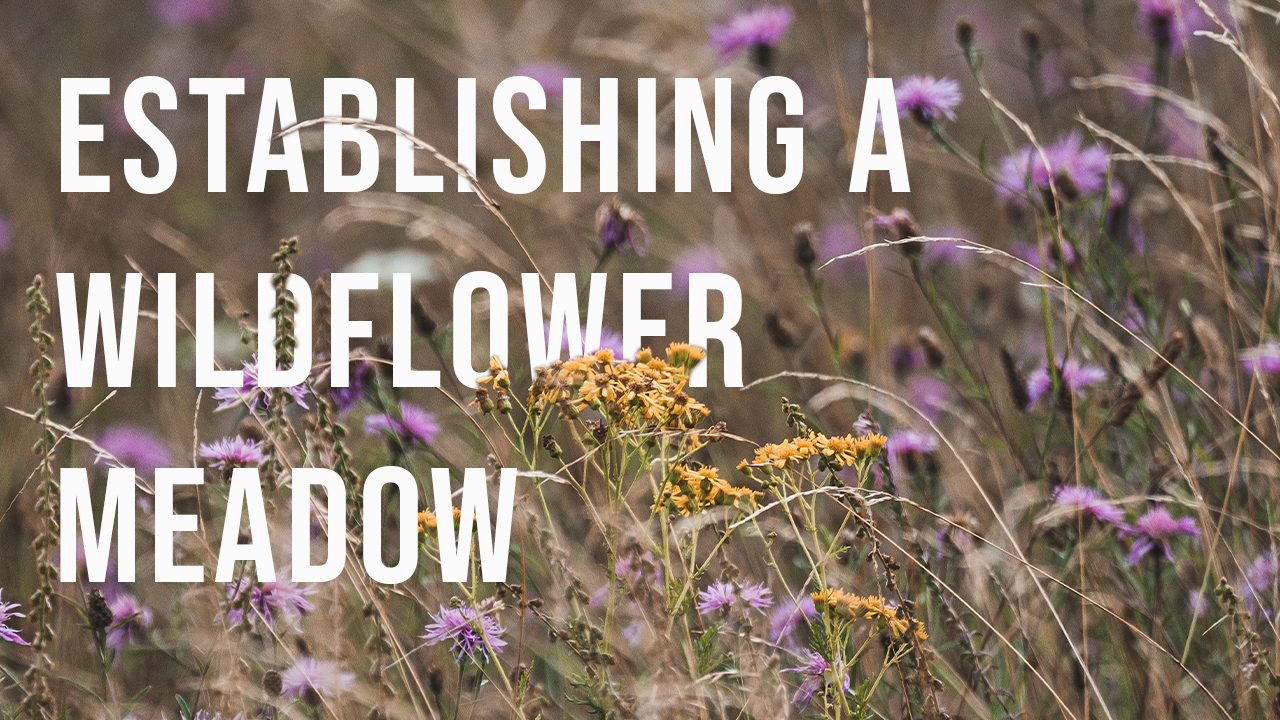
You've decided you want to create a wildflower meadow to replace an area of lawn. Fantastic! The benefits to pollinators are immense. However, when it comes time to select your seeds you're overwhelmed by what to choose.
Annual flowers like poppies and cornflowers? "Native" wildflower meadow seeds? What soil type and fertility do you have? What time of year should you sow them? How do you prevent lawn grasses from dominating your desired seedlings?
Several years ago I was asked to establish a wildflower meadow in a four acre field. Daunted by the scale of a task for which I had little experience, I called my friend and horticultural mentor, Chris Evans. At his Nursery in Gloucestershire they have a wild area. He warned me that the germination rates of "Native" wildflower seeds are often poor. For a job if this scale it would be costly and embarrassing if it failed to establish. I couldn't just wing it.
The customer had been inspired by the local council's "wildflower" areas they were creating on verges. Their method was: a big dose of Roundup (glyphosate weedkiller) to get rid of any living plants and then turning the soil over once the plants had visibly been killed. The seed mixtures included Californian poppies (Eschsholzia califorica) and cornflowers (Centaure cyanus). This seemed like cheating.
After consideration, I explained my reticence to the customer and walked away from the job. I wasn't confident in my ability to deliver it. It did however, leave me with a thirst to find out more about how to successfully establish wildflower grassland. I spoke to ecologists, designers of seed mixtures and swotted up on the subject.
Fast forward a few years and I started seeing news articles popping up about meadows again. I had recently moved into a new home and I was prepared to turn my lawn into native grassland. Chris Packham has been urging Britons to stop mowing their lawns to allow lawn grasses and flowers the chance to flower for their benefit to wildlife. Although the term "meadow" is used a lot, it's not very specific. In the UK it generally means an uncut grassland area that's annually cut for hay. This habitat was rapidly lost during WWII to agriculture for food crops. The good news is we have an opportunity as garden owners to re-establish it.
Choosing plants based on their value to a range of insects is a new concept to me. Gardeners make surprisingly poor ecologists! Luckily I was helped with advice from ecologist and rare plants specialist, Josh Styles. Below is the method employed by Wirral Borough Council that he explained to me that doesn't need glyphosate. It also keeps residents happy with the annuals that flower in it's first year. Try it - it's very simple!

Method
- Scarify (rake) to 50% soil exposure. I.e. get rid of half of the grass
- Sow a seed mixture rich in native grassland species. It also includes poppies and cornflowers to give a display in the first year as the perennials establish. https://www.meadowmania.co.uk/wild-flower-meadow/wild-flower-seed-mixes/wildflower-seed-for-mixed-soil-types.htm
- Sow in Autumn/Winter to allow Yellow Rattle (Rhinanthus minor) to have a period of intense cold that it requires before germination. I you're reading this in Spring/Summer it's still worth having a go.
- Cut annually and remove the clippings. You can leave it to dry in situ and either use it as hay or add it to the compost heap. The annual cut prevents shrubs and trees from establishing. Removing the clippings also reduces fertility which is key to a successful native grassland.
- You can see me doing this in my own garden in the video below


